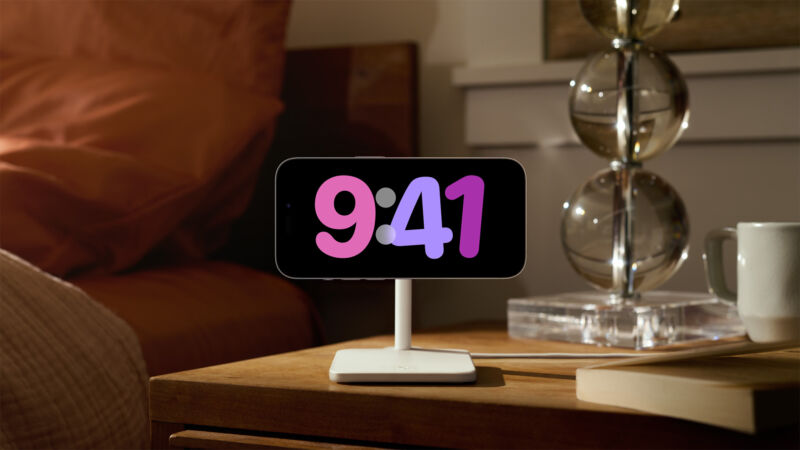iOS and iPadOS 17 drop support for iPhone X, first iPad Pros, and other old devices
iPhone #iPhone

 Enlarge / StandBy and other iOS 17 features won’t be coming to some older iPhones.
Enlarge / StandBy and other iOS 17 features won’t be coming to some older iPhones.
Apple
Apple sometimes releases new operating systems without changing the system requirements—but this year isn’t one of those years. The iOS 17 update will drop support for several older phones that can currently run iOS 16: 2017’s iPhone 8 and iPhone 8 Plus, and the original iPhone X.
Apple’s system requirements list the “iPhone XS and newer,” which should encompass the iPhone XR and all subsequent iPhone X-style notched iPhones, plus the 2nd- and 3rd-generation iPhone SE.
The iPadOS 17 update also drops support for most of the pre-2018 devices that iPadOS 16 still supported, including the 5th-gen $329 iPad and the very first 12.9- and 9.7-inch iPad Pros from 2015 and 2016. All other iPad Pros, the third-generation iPad Air and later, and the 5th-generation iPad mini and later will all run iPadOS 17, though the older a device is, the more likely it is to miss out on a handful of newer features (like Stage Manager).
Advertisement
The full iOS 17 support list.
Apple
The iPadOS 17 support list.
Apple
(Ars Technica may earn compensation for sales from links on this post through affiliate programs.)
Most of the iPhones and iPads supported include an Apple A12 Bionic chip or newer (or, for newer iPad Pros, M1 or M2 processors). The 6th-generation iPad and its A10 chip is the sole exception—these cheaper iPads usually use hardware that’s a few generations old to keep the price down.
As for Apple’s other iOS-related platforms, watchOS 10’s system requirements don’t change much. It will still run on any Series 4 or newer Apple Watch, but it does require an attached iPhone running iOS 17. If you have an older phone that can’t upgrade, you won’t be able to run watchOS 10 even if your watch hardware meets the requirements.